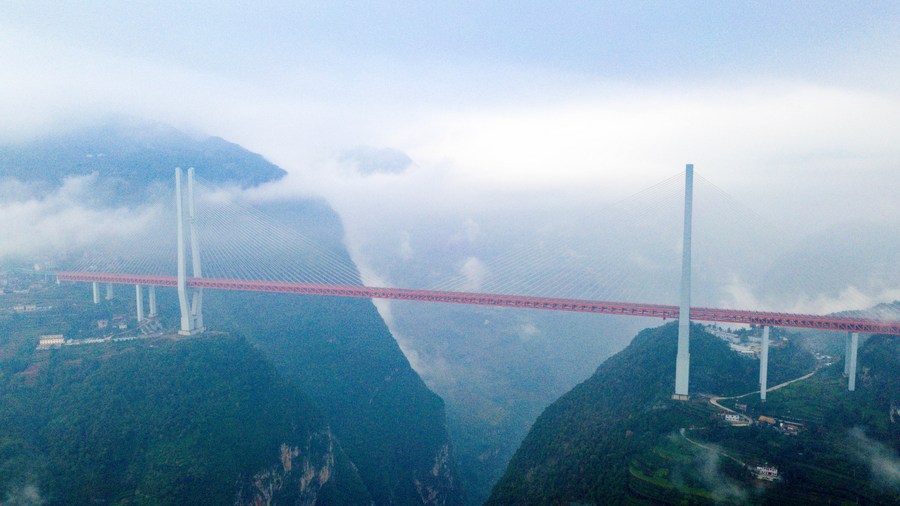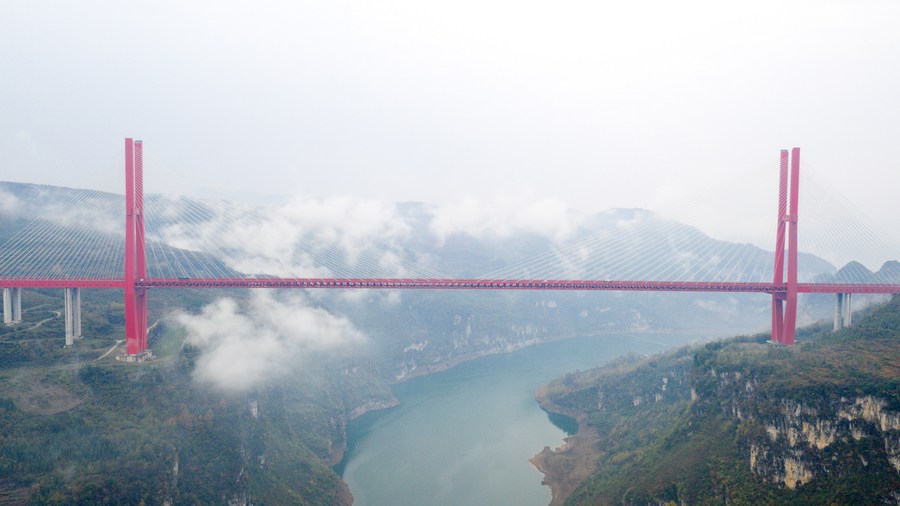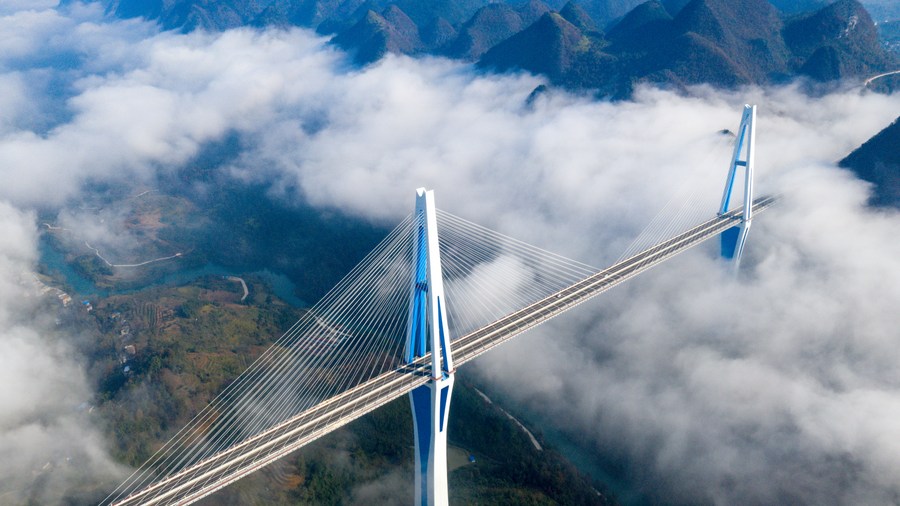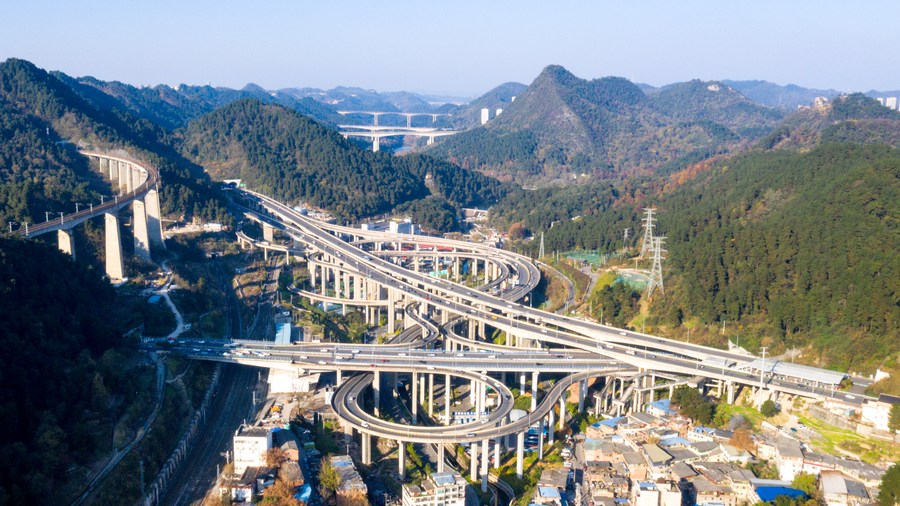Exploring China's "museum of world bridges" with FPV drones
(
Xinhua)
13:42, December 15, 2021
GUIYANG, Dec. 14 (Xinhua) -- As the only province without plains in China, southwest China's Guizhou Province boasts over 20,000 bridges among its karst mountains. Guizhou has 50 of the 100 tallest bridges in the world.
The province is known as "the museum of world bridges" due to the large number, variety, and complexity of the bridges built over the decades.
However, because rolling mountains and gorges cover more than 90 percent of Guizhou's land, the province's economic development has long been hampered by poor transportation conditions.
A slew of massive infrastructure projects have reshaped the province since the late 1970s.

Aerial photo taken on Nov. 28, 2021 shows the Beipanjiang Bridge in southwest China's Guizhou Province. (Xinhua/Ou Dongqu)
The Guinness World Records has certified the Beipanjiang Bridge, which sits over 565 meters above a valley, as the world's highest bridge.

Aerial photo taken on Nov. 27, 2021 shows the Baling River Bridge in southwest China's Guizhou Province. (Xinhua/Ou Dongqu)
The 370-meter-high Baling River Bridge, located near the iconic Huangguoshu Waterfall, has attracted many skydivers since 2012. Near the bridge, a bridge technology museum, RV campgrounds, and homestays have been built.

Aerial photo taken on Nov. 26, 2021 shows the Yachihe Bridge in southwest China's Guizhou Province. (Xinhua/Ou Dongqu)
Yachihe Bridge is the world's longest steel-truss, cable-stayed bridge, with a span of 800 meters and a total length of 1,450 meters.

Aerial photo taken on Nov. 25, 2021 shows the Pingtang Bridge in southwest China's Guizhou Province. (Xinhua/Ou Dongqu)
With a height of 332 meters, the main tower of Pingtang Bridge is the world's tallest reinforced concrete bridge tower. Travel time between the counties of Pingtang and Luodian has been reduced from over two and a half hours to about one hour since the Pingtang Bridge opened to traffic in December 2019.
The mega-bridges, including dozens of world records, have not only improved the road network and the quality of life for local residents, but have also added scenic beauty today.

Aerial photo taken on Nov. 30, 2021 shows the Qianchun interchange in Guiyang, southwest China's Guizhou Province. (Xinhua/Ou Dongqu)
Highway construction is also benefiting from the infrastructure boom. The Qianchun interchange in Guiyang, the provincial capital of Guizhou, is one of the most complicated in China. The intricate structure is made up of 11 ramps that run in eight different directions and are stacked on five layers. Many netizens have dubbed the interchange a "super roller coaster" due to its largest vertical drop of 55 meters.
In 2015, Guizhou has ensured that highways are accessible to all counties in the province, ranking first among China's western regions.
Through its powerful infrastructure, the once landlocked province has built its reputation in the world and will be linked to rivers and seas.
(Web editor: Peng Yukai, Liang Jun)















